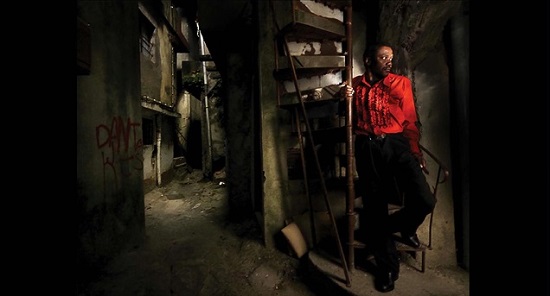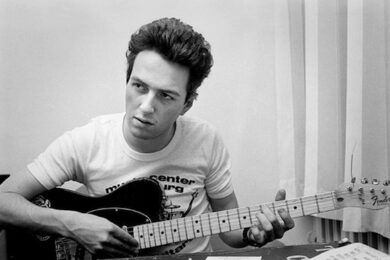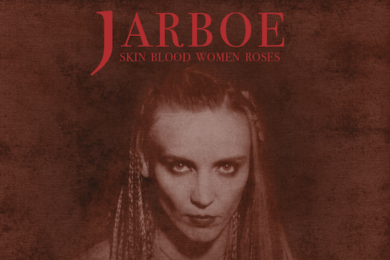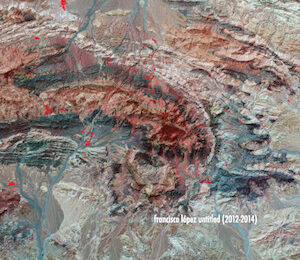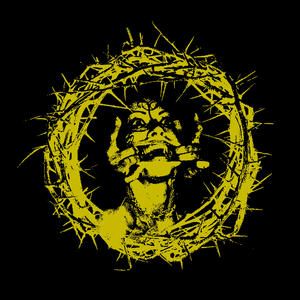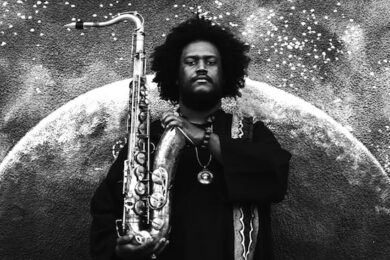Horse Money is the fourth film in what has now become the Fontaínhas quartet, the culmination of 20 years that the Portuguese director Pedro Costa has spent working with people living in a slum suburb of Lisbon.
Fontaínhas is a place that no longer exists as a place (it was demolished at the turn of the Millennium), but which persists as a community of people, most of them Cape Verde immigrants who arrived in Portugal in the early 1970s. Soon after their arrival, the Carnation Revolution saw Portugal liberated from Fascist dictatorship and establish democracy, yet in Horse Money and it’s predecessors, Ossos, (1997), In Vanda’s Room (2000) and Colossal Youth (2006), the experience of these immigrants and the marginalized poor become a means by which Costa examines the legacy of that revolution and its betrayal.
Costa’s films, at least since In Vanda’s Room, have shared certain unique characteristics: they are shot using a digital video camera, “a camera that you can buy in a supermarket,” says the director; the production is collaborative, the people on screen ‘playing’ themselves, supplying their own words and working as an ad hoc film crew with Costa; they use real locations and whatever light happens to be available, only now and then making use of additional lamps or mirrors; and, most pertinently given Costa’s filmmaking ethics, they are shot on budgets that probably wouldn’t cover the cost of sandwiches on a Hollywood production.
It might sound a bit like Dogme 95 but it’s neither as self-conscious nor as self-regarding. Instead, it’s a style and attitude of filmmaking that has something of the punk ethos to it. Costa was a fan as a teenager in the 1970s, listening to bands like Wire, The Sex Pistols and The Clash while he watched films by Godard and Renoir, or American B-movies by directors like Jacques Tourneur, his feverish enthusiasm mirrored in different ways in the country at large, freshly liberated and eyeing new horizons. It’s a spirit he’s never lost, and it’s no surprise to hear his reaction to the conventions of his trade: “I had my filmmaker’s life organized like any other. You write a script, then one day a chauffeur-driven car shows up at your door, and an assistant says good morning, and tries to make your day wonderful, and says the scene you’re going to shoot today will be amazing, all that stuff.” For the majority of filmmakers, this is what it means to have made it, to have arrived. But Costa was immediately looking for the exit. “I was not thinking about the right things. I was just running up against time in every shoot and it seemed strange how this art of cinema, which is supposed to be in one sense the art of time, has been arranged to be an enemy of time.”
His thinking continued to evolve during the shooting of Ossos, the first film set in Fontaínhas. Shot in 35mm and using more of the familiar apparatus of filmmaking, Costa began to feel uncomfortable with the process. “When you see filming on the streets, you have an immediate feeling there’s some kind of imposture there. There’s some kind of lie. It’s all created to escape reality. The talk is always of aesthetics when it should be more about the morals and the money.”
On a practical level, Costa found that using more equipment had the effect of making the behaviour of the people he was filming more mechanical. So when he made In Vanda’s Room, he went to Fontaínhas alone, the only equipment his cheap digital camera. Without other pressures, he was finally able to take his time. It had a transformative effect on how he worked and the kind of film he produced, like a return to first principles, reconnecting the work to the experiential truths of those inhabiting the frame. They, as much as he, dictated the kind of film that would be made.
By the time he got to Colossal Youth, he was focussing on Ventura, a Cape Verdean construction worker. Ventura is a mesmeric screen presence, imbued with the heroic, even prophetic, but there’s also something unfinished, the sense of a man caught between worlds. His history is established in vague, ambiguous ways, and it comes with its own colour, its own mythology, a version of the mythology we all create for ourselves, and which sooner or later finds a way to unmask us. In Horse Money, this unmasking would seem to be happening with Ventura.
But this is all speculative. Costa’s films contain narratives but they are piecemeal, elliptical and highly subjective. There is no pronounced effort to fill in the viewer on what exactly is happening, where exactly we are. They are stories told in intimate ways, which is to say they are told from the inside, from the people who have lived the lives you see on camera. These are not stars so devoted to their craft they’ve spent a whole six months living in the slums, these are the slums and these are the people of the slums. This is method acting without the acting, and the result in Horse Money is a film where these lives find expression is new and powerful ways, ways that are creative and stylized, with a surefooted sense of what constitutes good art. There is no condescension here, nor a suggestion of the superior virtue of the oppressed. What there is, is reality. As for Costa’s part in creating this reality – and it is only a part, as he is at pains to make clear in interviews – it boils down to a desire to make the camera almost unnecessary. “Art is not anything else but reality,” he says. “We should be concerned with thinking about the things that are there, and not with the things that are not.”
This being the case, there’s a salutary lesson for any filmmaker in the fact that, from his “supermarket” camera, Costa has conjured images that have had critics clambering over each other in search of extravagant comparisons. He is painterly like Caravaggio, Rubens and Vermeer, he is photographic like Jacob Riis or Jeff Wall, he is expressionist like Wiene or Lang. There’s truth in all of this. Riis’ stills from tenement life in late 19th Century New York actually feature at the start of the film, Costa having encountered the photographer’s work during the same period of the 1970s he was discovering so much else, and certainly silent film, German expressionism and American Noir are a constant visual echo in Horse Money. But it’s not a disinterested aestheticism – Costa does not manipulate these environments, remember. This is what is actually there. It’s almost as if channeling the entire mechanics of cinema through his one DV camera has a condensing effect. Or else, given the fixed position of the camera in most scenes, I imagine it as a telescope looking into deep space, finding details and texture: the gradations of colour on a wall, dust motes spiraling in vortices of light, whole worlds of quantum experience generating hallucinatory, even mystical effects, locating an inherent strangeness in materiality itself.
Throughout the shooting of Horse Money, Ventura was sick. The exact nature of his illness is never clear (his hands shake a great deal) but it dictates the kinds of spaces the film inhabits and the kind of narrative we get. There is the sense of everything happening underground, in what might be hospitals but could just as easily be prisons or other large social institutions. In this sense it seems to reflect the agony of Ventura’s soul. “Confess,” says someone to him as he lies in a hospital bed. But to what? There are hints that he may have been involved in a violent crime as a young man, but ultimately, like Kafka’s Joseph K, we never quite know.
In one extraordinarily surreal and disturbing scene, Ventura finds himself in a lift. With him is a soldier, coated entirely in what looks like the same gunmetal as his rifle, standing perfectly still. The impression is of a giant toy soldier, or one of those street performers who ply their trade in city squares. It’s a long scene, with voices coming from different people in Ventura’s life, voices we sense he would prefer to forget. “I had a feeling we were going deeper and deeper in this scene,” Costa says. “I have the feeling now, and many other people say the same thing, that Ventura is like a slave in this film.”
Slavery and the nature of immigration are of course inescapable in Fontaínhas. The people from Cape Verde are the descendants of slaves. The islands off the west coast of Africa were uninhabited until the Portuguese arrived in the 15th century and found it to be strategically useful as a clearinghouse for their human cargo. There’s more recent history too. The characters can be heard singing an anthem to Amílcar Cabral, the writer and activist who led the calls for independence from Portugal and who was assassinated in 1973. For all the bleakness here, the film actually has a strong musical element, primarily from Os Tubarões, the Cape Verdean band that flourished after the islands achieved their independence in 1975, in particular the beautiful Alto Cutelo from their debut album Pepe Lopi. At one point, in fact, Gil Scott Heron was going to be involved, perhaps appearing alongside Ventura, but this prospect was lost when he died in 2011.
Finally, I should end with a warning of sorts. For all the film’s outstanding qualities, it remains difficult viewing, certainly if you’re not acclimatized to Pedro Costa’s work, its pace and style. In a previous interview he admitted that his films are “claustrophobic and dense and difficult.” This was the first Costa film I’d seen, and prior to the screening I’d learned about their polarizing effects, of walkouts, of people angry or frustrated by them, of one woman complaining it was like “rats fighting in her skull”. (All of this, of course, can be treated as a challenge to the hardened cinephile.) I have to confess there were moments where I wanted to leave, to escape the stillness of it, what feels like a kind of implosive stillness. But then there’s perhaps something of the punk attitude at work here too, a direct confrontation with the conventions of spoon-fed narratives, formulaic characters, the GDP-sized investments that go into making utterly forgettable cinema. “It’s become impossible to have this schizophrenia between the sorts of films made today and the reality of our world,” says Costa. “We should make films in a different way.” Horse Money is a triumphant example of the commitment to do just that.
Horse Money is in selected cinemas around the UK now.


